It must be an unenviable task creating a video game based on the pinnacle of motorsport and the most watched annual international series in the world. The feeling of ‘damned if you do, damned if you don’t’ must be hanging over the heads of the developers all the time. Do they go for utmost realism, catering to the hardcore fans but potentially risking mass appeal, or do they make the game more accessible and friendly and risk neutering the high tech and dangerous amalgamation of man and machine? We were mightily impressed with Codemasters’ efforts at striking a balance with last year’s F1 2010, and shall now see if this year’s effort has paid off.
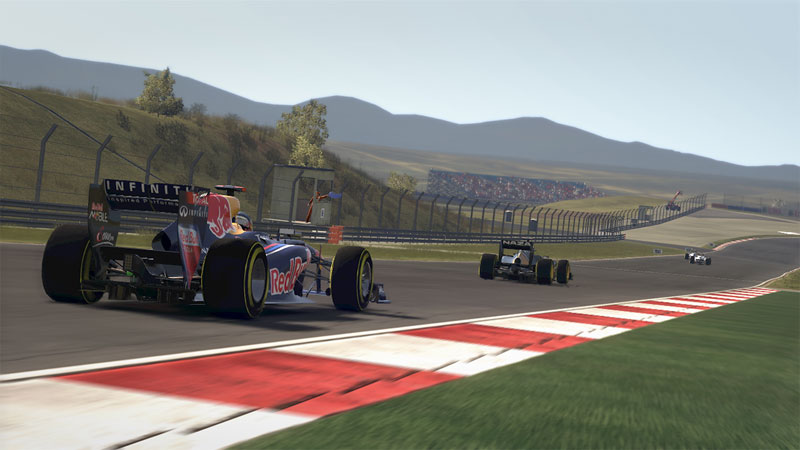
F1 2011 is very much an evolution of last year’s title with a big exception. Unlike most sports, where the rules and regulations are carried over from one season to the next, Formula One has managed to dramatically shift goalposts on a regular basis by tweaking bodywork and aerodynamic regulations, introducing or banning technologies, modifying the format of qualifying, changing tyre suppliers and regulations, etc. Hence, with F1 2011, we see the introduction of new technologies with DRS and the re-introduction of KERS. We also get new tyres from Pirelli, with two sets of compounds offering differing performance characteristics having to be used during a normal race. So Codemasters didn’t exactly have it easy with the sequel and had to pay attention to all of these new facets from this year’s championship.
The game features the complete 2011 calendar, including the brand spanking new Buddh International Circuit in Noida, the venue for the inaugural Indian Grand Prix. The circuit is quite breathtaking with its high speed first half followed by the twisty, technical and aero-demanding second half, all of which has been modelled in the game. The single player modes offer up the choice of a full career mode, Grand Prix and the Proving Grounds, which is essentially a leaderboard of timing challenges. In career mode, you start off as the second driver in your choice of one of the three minnow teams. You must establish yourself by completing qualifying and race position objectives as well as R&D objectives during the race weekend practice sessions. You also need to come out ahead of your team mate in the intra-team battle, with a scoreboard keeping track of the head-to-head stats. Achieve enough objectives and you’ll become the defacto leader of your team and can control the direction of the car’s development to suit you. Achieving objectives also grants you XP, which levels up your driver’s reputation. As it grows, you will start attracting the attention of teams further up the grid and eventually land job offers from them. The career mode has been streamlined from last year, making it much quicker to jump into the meat of the action. The annoying French-accented female agent from last year is thankfully gone.
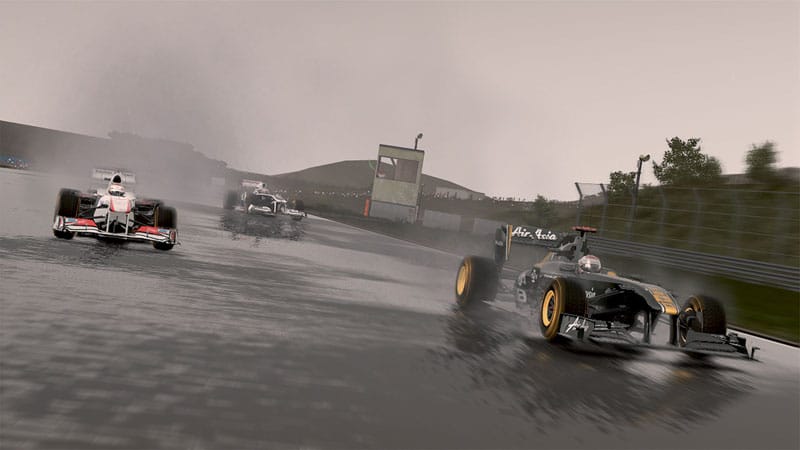
The Grand Prix mode allows you to create a customized championship season by choosing the number and venues of races to run during the year and jumping into the shoes of any of the existing teams’ cars and race as one of their contracted drivers in your custom season. You can choose to go through the whole extended weekend, with practices, qualifying and the race, or shorten the weekend by eliminating some of the practice and qualifying sessions, or just play the races themselves. It’s an easy way to familiarise yourself with the circuits before taking on the challenge of the career mode.
The handling system has been improved from the previous title. Cars feel slightly more weighty and grounded; a small difference, but a noticeable improvement. The effects of DRS and KERS have been reproduced surprisingly well, with DRS providing a significant uptick in speed, and KERS ushering in the vital boost of acceleration. Similarly, the performance differences between tyre compounds have also been captured well. I consistently found myself lapping between 1-2 seconds slower (depending on the circuit) with the prime compound compared to the option compound. Tyre degradation is reasonably modelled, although the ‘performance cliff’ that has been witnessed this season is not as dramatic as expected. Wet weather racing is incredibly dramatic, with sphincter clenching changes in grip level and almost zero visibility when following other cars. Weather is variable over a race and the improvements in track condition as weather improves force you to actually think strategically about your tyre choices and pit stops. You can also tune your car while it’s in the pits during practice sessions and qualifying using the comprehensive tuning menu that allows you to adjust balance, suspension, handling, aerodynamics, gearing and engine modes. You can also pre-define a pit stop strategy to be followed during the race.
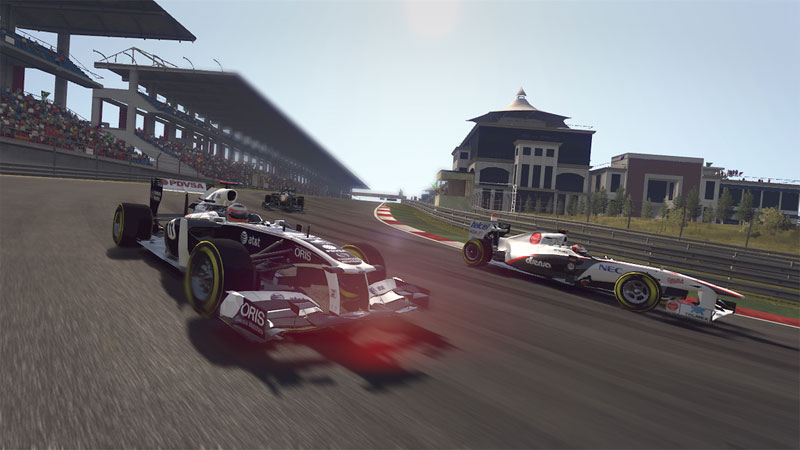
There is a variety of difficulty options to play with to tailor the game to your desired level of challenge. You can adjust brake and steering assists, ABS, traction control, driving line, AI difficulty, pit stop assistance, and more. The comprehensive nature of the difficulty settings should allow anyone to find a combination of options that allows them to enjoy the game. One issue to note is that the game appears to have some difficulty balance issues. The first three races I faced in career mode all turned out to be wet races. We are talking about Montreal, Sepang and Shanghai. While it’s not impossible for all three venues to witness rainfall, it certainly is an improbability, and this did cheapen the experience a little bit.
There are more niggles. Prior to a recent patch, you would struggle to make acute turns, such as the Loews hairpin in Mote Carlo or the hairpin before the back straight at Montreal. Additionally, playing with traction control off and tyre simulation enabled yields an almost impossible challenge, which diminishes the fun factor dramatically. It is better to play with traction control set to medium and tyre simulation disabled. A racing wheel is highly recommended to extract the best experience from the game, where the excellent force feedback and precise input control truly elevate the experience. The game is still playable with a controller, albeit a little twitchy.
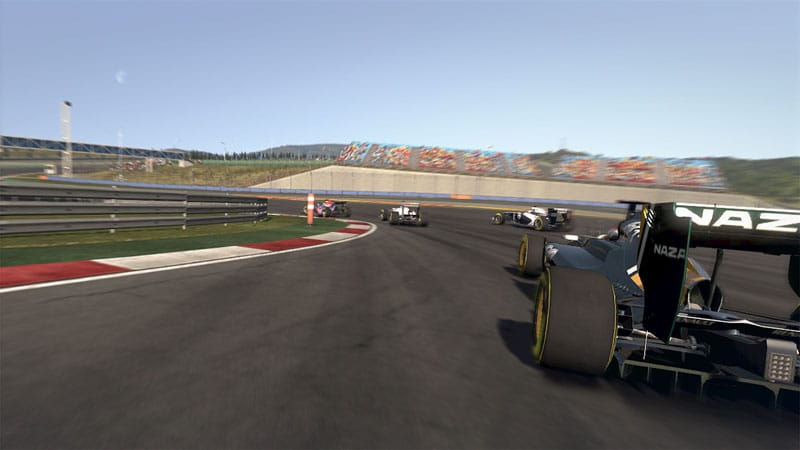
The AI has been improved over last year’s game. AI drivers seem to demonstrate mild differences in driving styles, with some being quite aggressive when racing wheel to wheel, while others are more circumspect. However, backmarkers can still be a huge pain, often straggling across the racing line and refusing to yield to you in corners. Strangely, Fernando Alonso and Ferrari seem to be the fastest driver and car package in the game, an anomaly compared to the reality of the 2011 season. A new addition to the feature set this year is the safety car. The familiar silver Mercedes Benz SLS AMG can be seen sitting at the end of the pit lane during pit stops and is deployed in the event of a major incident. Once the car is deployed, you are expected to maintain a steady pace and are not allowed to exceed a certain speed limit. The game automatically cuts off the throttle when you go faster and a warning flashes on screen. It’s a fantastic addition and does change the complexion of the race when it occurs.
The game’s visuals are powered by Codemasters’ tried and tested EGO engine and shines with crisp visuals, good hardware scaling and some of the best wet weather effects witnessed in racing games. The much aligned ‘piss’ filter that is a hallmark of the engine has been significantly toned down to the point of being a non-issue. On a beefy rig with everything turned up, the game looks sublime. The game sounds fantastic too, with engine roar, wind shear and tire squeals coming through loud and clear. However, the trademark lawnmower chatter of this year’s commonplace blown diffusers is a surprising omission considering how much of a controversy surrounded the concept.
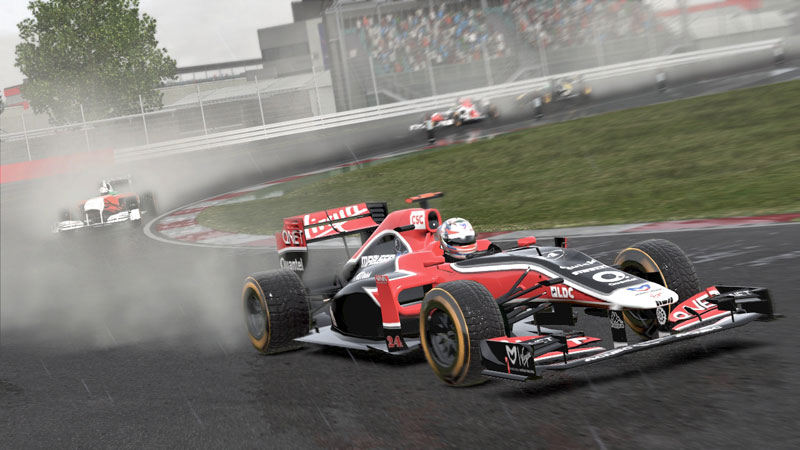
The multiplayer component carries over the same elements from last year, including sprint races, qualifying battles and qualifying + race competitions. However, F1 2011 has a wonderful new trick up its sleeve in the form of a co-op championship. You and a friend can play an entire championship season as teammates. While I haven’t had the chance to test this feature out yet, it sounds like an incredibly fun way to experience this game. Finishing in the points and completing multiplayer objectives grants you XP, which levels up your character’s online reputation. Multiplayer is smooth and generally lag-free, and in my experience, the kamikaze stupidity witnessed playing F1 2010 on PSN is dramatically lower playing this year’s version on the PC.
Conclusion
F1 2011 is more than just an evolution of last year’s game. The game fully models this year’s technical regulations, and the additions of new features like the safety car and co-op championship are significant. The changes and improvements are sufficient to warrant the full price tag and your precious time. All that aside, it is quite simply a boatload of fun to play and a must-have for game playing Formula One fans.
Reviewer’s Rig:
Processor: Intel Core i7 920
Motherboard: Gigabyte X58A-UD7
Graphics: XFX Radeon 5970 2 GB
RAM: 6 GB
Keyboard: Microsoft Sidewinder X6
Mouse: Saitek Cyborg
Other input device: Logitech G27 racing wheel, Microsoft Xbox 360 controller
Monitor: Samsung SyncMaster 2333 HD (23”)




